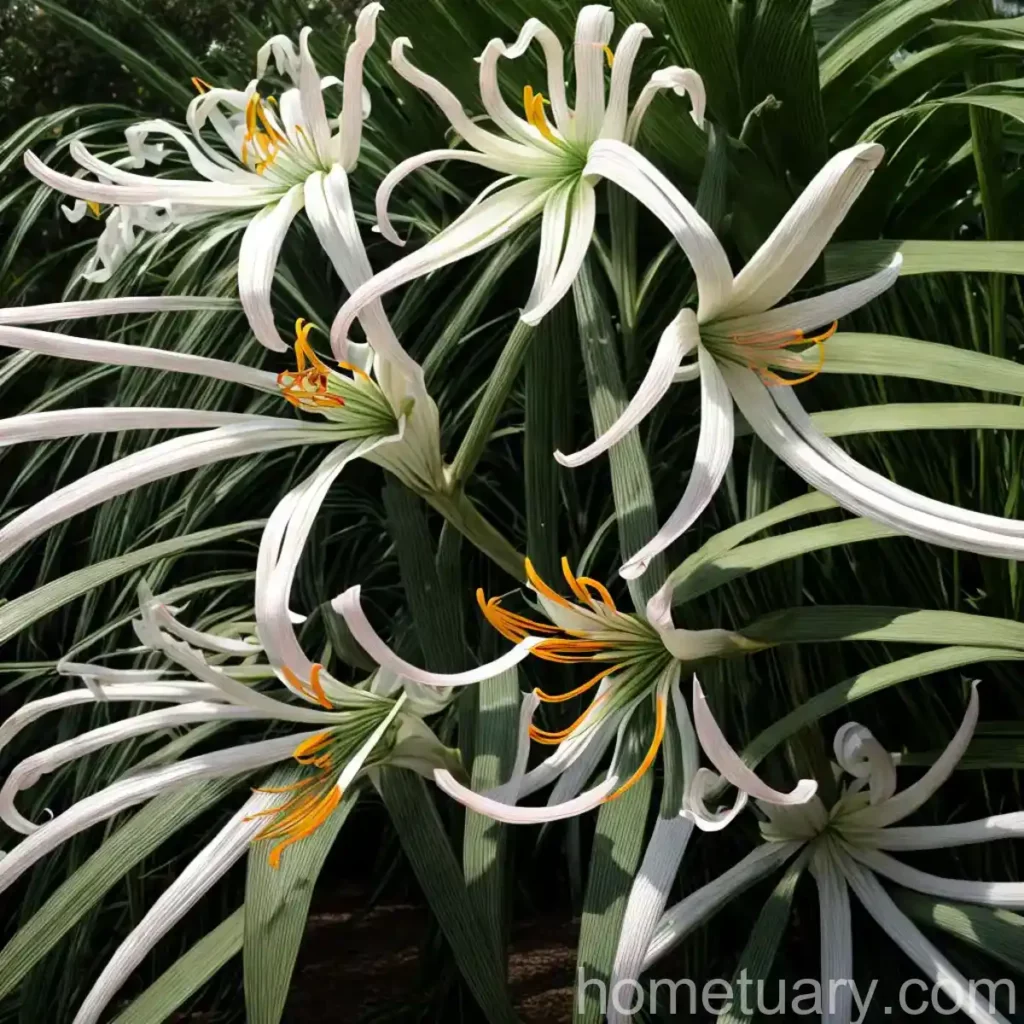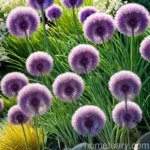Spider Lily (Hymenocallis caroliniana): A Complete Guide
Introduction
Plants are an essential part of our environment, providing us with food, medicine, and aesthetic beauty. One such plant that has garnered attention for its delicate beauty and cultural significance is the Spider Lily (Hymenocallis caroliniana). Spider lilies are renowned for their unique appearance and are native to the southeastern United States, where they thrive in wetland habitats, including swamps and marshes. In this comprehensive guide, we will explore the various aspects of Spider Lily, including its culture, uses, environmental requirements, propagation, common diseases, and fun facts.
What is Spider Lily (Hymenocallis caroliniana)?
Spider Lily, scientifically known as Hymenocallis caroliniana, is a perennial plant belonging to the Amaryllidaceae family. It is also commonly referred to as Carolina Spider Lily, Southern Spider Lily, and Native Spider Lily. The plant is characterized by its striking white flowers and long, green, strap-like leaves. The name “Spider Lily” is derived from the delicate and intricate appearance of its flowers, which resemble the legs of a spider.
Key Takeaways – Spider Lily (Hymenocallis caroliniana)
Before delving deeper into the various aspects of Spider Lily, let’s take a quick look at the key takeaways associated with this fascinating plant:
- Scientific Name: Hymenocallis caroliniana
- Common Names: Spider lily, Carolina Spider Lily, Southern Spider Lily, Native Spider Lily, White Spider Lily
- Native Habitat: Southeastern United States
- Distinct Feature: Striking white flowers with spider-like appearance
- Cultural Significance: Rich folklore and symbolic meanings
- Environmental Preference: Thrives in wetland habitats
- Propagation Method: Bulbs and seeds
- Uses: Ornamental, medicinal, and cultural
- Challenges: Susceptible to certain diseases and pests
Now that we have a brief overview, let’s dive into the various aspects and characteristics of the Spider Lily.
Culture
Uses
Ornamental: Spider Lily is primarily cultivated for its ornamental value. The striking white flowers with their intricate design make it a popular choice for landscaping and garden adornment.
Medicinal: In some cultures, Spider Lily has been traditionally used for its medicinal properties. It is believed to have various therapeutic applications, ranging from skincare to herbal teas.
Cultural: Spider Lily holds cultural significance in the regions where it is native. It has been a part of folklore, mythology, and traditional literature, often symbolizing purity and beauty.
Environmental Requirements
Water
Spider Lily thrives in moist to wet soil conditions, making it a suitable choice for water gardens and wetland habitats. Adequate watering is essential, especially during the growing season, to ensure healthy flower production and foliage development.
Sunlight
While Spider Lily prefers partial shade to full sun, it is crucial to protect its delicate blooms from intense afternoon sun, which can cause damage and wilting.
Fertilizer
A balanced, water-soluble fertilizer can be applied to Spider Lily plants during their active growth phase, typically from spring to summer. It is essential to follow the recommended dosage and application frequency to avoid fertilizer burn and promote healthy growth.
Soil
Well-draining, loamy soil with high organic content is ideal for Spider Lily cultivation. It is essential to ensure that the soil remains consistently moist without becoming waterlogged, as excessive moisture can lead to root rot and other fungal issues.
Pruning
Pruning Spider Lily plants involves removing spent flowers and dead foliage to maintain a tidy appearance and promote healthy growth. It is recommended to prune the plants after the flowering season to prevent the formation of seed pods and redirect the plant’s energy toward bulb and leaf development.
Propagation
Spider Lily can be propagated through bulbs and seeds:
Bulbs: Division of mature bulbs is a common propagation method for Spider Lily. The bulbs can be carefully separated and replanted in suitable growing conditions to facilitate new plant growth.
Seeds: Collecting and sowing Spider Lily seeds can also be an effective way to propagate the plant. The seeds should be sown in well-draining soil and kept consistently moist until germination occurs.
Container Popularity
Spider Lily’s adaptability to wetland habitats makes it an excellent choice for container gardening, particularly in water gardens and pond landscapes. The plant’s graceful appearance and beautiful flowers add a touch of elegance to container displays, making it a favored choice among gardening enthusiasts.
Common Diseases
While Spider Lily is relatively resilient, it is susceptible to certain diseases and fungal issues that can affect its overall health and vigor. Some common diseases that may affect Spider Lily include:
- Leaf Spot: Characterized by the formation of dark spots on the leaves, often caused by fungal pathogens under prolonged periods of high humidity.
- Bulb Rot: Excessive moisture or poor drainage can lead to bulb rot, causing the bulbs to decay and the plant to wilt.
- Powdery Mildew: White powdery patches on the foliage indicate the presence of powdery mildew, a fungal disease that thrives in humid conditions.
Disease Diagnosis
Diagnosing and addressing diseases in Spider Lily plants involves careful observation and proactive measures. By monitoring the plant for any signs of discoloration, wilting, or unusual growth patterns, it is possible to identify potential disease issues early on and take appropriate remedial actions.
Common Pests
While Spider Lily is relatively resistant to pest infestations, it may encounter some common pests that can pose a threat to its health:
- Aphids: These tiny, sap-sucking insects can infest the foliage and buds, causing wilting and distortion of new growth.
- Spider Mites: These tiny arachnids can create fine webbing on the foliage and weaken the plant by feeding on its sap.
- Thrips: Thrips can cause damage to the flowers and leaves by puncturing the plant tissue and feeding on the sap, leading to discoloration and distortion.
Botanist’s Tips
To ensure the optimal growth and health of Spider Lily plants, consider the following botanist’s tips:
- Monitor Moisture Levels: Regularly check the moisture levels of the soil to prevent overwatering or underwatering, as both can negatively impact the plant’s health.
- Provide Adequate Drainage: Ensure that the planting site or container has proper drainage to prevent waterlogging, which can lead to root rot and other fungal issues.
- Mulch Application: Applying a layer of organic mulch around the base of the plant can help retain moisture, suppress weed growth, and protect the roots during extreme temperatures.
Fun Facts
Uncover some fascinating fun facts about Spider Lily (Hymenocallis caroliniana):
- The delicate white flowers of Spider Lily are not only visually striking but also emit a pleasant fragrance, attracting pollinators such as bees and butterflies.
- Spider Lily has been a subject of artistic inspiration, featuring in floral arrangements, botanical illustrations, and traditional cultural depictions.
- In some regions, Spider Lily has been associated with folklore and symbolism, representing themes of purity, renewal, and spiritual significance.
Links to External Resources
Explore additional information and resources about Spider Lily from these reputable sources:
- The American Horticultural Society
- The North Carolina Botanical Garden
- The Royal Horticultural Society
Conclusion
In conclusion, Spider Lily (Hymenocallis caroliniana) is a captivating plant with a rich heritage, ornamental allure, and ecological significance. From its striking appearance to its varied cultural uses, Spider Lily continues to enchant individuals with its unique attributes. By understanding its environmental requirements, propagation methods, and potential challenges, enthusiasts and horticulturists can cultivate and appreciate the beauty of this remarkable plant.
Whether adorning water gardens, adding elegance to floral arrangements, or conserving wetland ecosystems, Spider Lily holds a special place in the world of horticulture and botanical fascination.
As a plant scientist, I find the complexities and beauties of plants endlessly captivating, and Spider Lily (Hymenocallis caroliniana) is no exception. Its rich history and diverse uses highlight the importance of understanding and preserving the natural world around us.
I hope this comprehensive guide provides valuable insights into the world of Spider Lily, inviting readers to explore its cultural, environmental, and horticultural significance. If you have any questions or experiences to share about Spider Lily, feel free to connect and continue the conversation. Happy gardening and botanical exploration!















